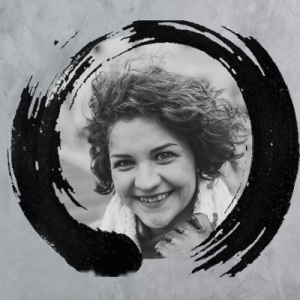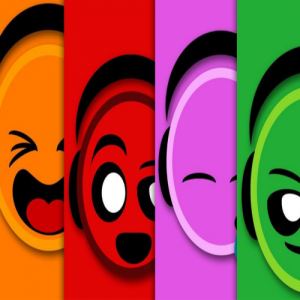This article is about a subset of dancers that seem to be appearing all over the world and growing in numbers. I collectively refer to these dancers as Generation Performers. In this article, I will describe the genesis, symptoms and long-term effects of being a member of Generation Performer.
DISCLAIMER: With all my articles, I am sharing my personal opinions and observations on Salsa. I do not intend to offend, take away people’s earnings or discredit offerings made by schools. However, as a Salsa instructor I do believe that it is my role to provide information and educate those that would like to know my opinions.
Genesis
When I started my Salsa journey I was obsessed and danced 7 days a week and twice on Saturday and Sunday; this was the profound impact that Salsa had on my life. I was not just taking classes but was social dancing from the start of the night to the point where the lights would come on and the teacher would kick me out. After my second year, a friend told me about the concept of performance courses and how it would be a chance to 1) try something different, 2) Push yourself to learn and master something that I might not like and 3) to put myself in front of a mirror and refine my movements and the cosmetic side of my dancing. Attending these courses did wonders for my development as I was in a group where people were just as obsessed as I was if not more so. I believe that I joined a performance course at the right time in my journey.
For some schools there were also great benefits to facilitating these performance teams as 1) in London most Salsa classes are drop-in based so the concept of upfront bulk payment was very appealing, and 2) You have a group of students together and united by achieving a goal which is great for community building and 3) Students feel really good about achievements made through their performances which builds brand loyalty.
However, as more schools picked up on this concept the scene was suddenly flooded with opportunities and after a while, there were not enough dancers to make this business model work. Some schools offered five or six courses every few months. The massive supply and not enough demand caused schools to start lowering the entry barrier and in some cases allowing students who have only just started dancing Salsa into these courses.
With this in mind I would like to define Generation Performer as:
“A member of Generation Performer is someone who is new to Salsa and is encouraged to join a performance course before being able to Social Dance.”
Symptoms
I have written about the various benefits and drawbacks of Performance Courses in a previous article (click here) but I have observed that dancers in Generation Performer will have the following key symptoms:
Social Dancing Anxiety – Through conversations with dancers and my own observations I have seen those who have 3+ years of Salsa experience and will go to Salsa events and not have the confidence to dance. This is particularly unfortunate when the dancers have paid a high price to go and perform at an international event but cannot indulge, learn from and enjoy the variety of dancers present. Social dance anxiety is an effect of performance courses because they take a lot of time, effort and energy and leave very little for social dancing.
Clique Dependency – Related to Social Dancing Anxiety clique dependency is common among Generation Performers. It has been a running joke that these dancers will go to big events and spend the majority of the night in a single corner and only dance with each other. This behaviour is understandable as performing requires skills like accuracy, precision and synchronicity whereas social dancing requires dancers to deal with randomness, spontaneity and the ability to have fun regardless. Social dance skills cannot be improved through performance courses alone.
Inadequate Vocabulary – This symptom is a little more dangerous than the rest. When you go into a performance course you will learn some impressive moves which you will practise with a few partners to perfect. Some of these will be dance floor leadable but require social dancing skills to execute these with random dancers. This relates to both Social Dancing Anxiety and Clique Dependency as the dancer will feel inadequate dancing with new people but will find a home dancing with members of their team.
Unhappy with Imperfection – This is going to sound cheesy but in my mind, the imperfections and randomness that come with social Salsa dancing are part of the magic. When you are social dancing you play around, create a fun environment for you and your partner to explore and to some extent goof off. In a performance course we are all about perfection: are we hitting the music at the same time? are we all in sync? are we spinning at the same speed? Whereas social dancers will giggle when a mistake is made and laugh it off; I have seen grimaces in the face of Generation Performers when something does not go according to plan. This has a massive effect on you as a dancer as for the most part people will not enjoy dancing with you. I have even seen a Generation Performer taking women aside to show her a choreographed move from his performance course that was not leadable.
Disconnection from Music – This is a byproduct of performance courses. Most likely as a dancer in a performance course you will be listening to the same song repeatedly to really get it into your head. You will then be doing moves to fit that music over and over again. This is great for generating the muscle memory required to perform but what eventually happens is that you start doing long parts of your choreography to any and all music; after a while you start to ignore the music completely and just go for the moves as this is where you find your satisfaction.
NOTE: With regards to Disconnecting from Music I had an interesting conversation with Loïc Cara about his previous experiences using Performance Courses as a platform to teach musicality; a lot of time is spent listening to a single song so as an instructor you can spend time dissecting and drawing out various aspects of the music. I agree that this is definitely possible and can be great if implemented. From my own experience and observations this is not normally done as 1) you have to get a performance-ready within 9-10 weeks, 2) the students are still trying to get the physical moves sorted, and 3) Generation Performers are still way too new to fully understand the intricacies of Salsa music.
Long Term Effects
The long term effects I have seen both in the UK and other countries are:
No More Classes – Generation Performers, who are new to Salsa, are not overly addicted, have little time and therefore cannot attend regular classes; unfortunately, this extends beyond the end of the performance course. For some reason performing at big events develops an inflated ego. After only two years of Salsa, I had a student tell me that he can only learn from Adolfo because there was no one good enough to teach him. I thought this was a one-off and then more people have told me the same and would rather learn from YouTube than visit their local schools or teachers.
Believe That No One is Good Enough – Due to their inflated ego these dancers believe that they are great and that mistakes are made by their partners and not themselves. This leads them to believe that no one is good enough to dance with them. This causes internal conflicts when you see these “Not Good Enough” dancers having an amazing dance with other partners. So you dance less and actually start becoming really grumpy and, my biggest pet peeve, start having conversations with lots of name-dropping without having anything substantial to say. I have also heard the following which makes me laugh: “I need to go to NY and then I will be an amazing dancer”… I have heard this, waved goodbye when they left and saw them come back no better than they were when they left.
Quit Salsa – This for me is extremely sad to observe. Based on all the symptoms described and the long-term effects I have seen many people quit Salsa a few months after they finish with Performance Courses. From what I gather it is because they have not been given the ingredients to enjoy Salsa for the long term. Love of the music is not developed because you have only listened to a few songs, not developed friends on the dance floor as you were a part of a clique (and grew apart after stopping the performance course) and cannot take pleasure in the infinite variety that exists within Salsa because you were in a box for way too long.
Summary
As mentioned previously I think that Performance Courses have their place and purpose but market conditions have caused many schools (all around the world) to push students into Generation Performers i.e. into courses before they have had a chance to enjoy the social dancing side of Salsa.
Many dancers have come to me for help to improve their dancing and I quickly diagnose them as a member of Generation Performer. I do not have the skills, training or tools to help students as this is more mental than physical. My only recommendation is to stop what you are doing, change habits or potentially take a 3-month break from it all and then come back with renewed perspective.
Unfortunately, I have seen way too many dancers leave the Salsa scene altogether which is disheartening and one of the reasons I handed over the reins at TNT and decided to retire from teaching Salsa.
Are you currently suffering from Generation Performer? Do you have the symptoms described and are happy with where you are? Have you recovered from Generation Performer and can share your thoughts? Do you disagree with me and my observations? Either way, I would love to hear from you and your personal experience.





You’ve hit the nail on the head.
I totally agree with this and couldn’t have put it better.
I’m relieved that I’m not the only one that feels this way.
Having taught Salsa for the best part of 20 years, I have seen this trend happening.
And have been feeling helpless to change it.
I decided to stop performance courses, which btw was only offered to advanced students, and am now teaching the joy of social dancing.
Thank you Toan for this article
PS not knocking performers.
Your welcome Debby, and thank you for taking the time to read it.
Great article Toan. You make really important points that speak to the demise of creativity in the social dance scene. I’ve also noticed, at least here in the States, that increasingly people choose to join franchised branches of performance courses- of famous teams that are located in another state or country. They buy the team’s choreography, and get to use the more famous team’s name, but they don’t have regular instruction with that team unless they pay for private lessons. On one hand, this can be a great way to learn a particular dancer’s or team’s technique, but the increasing tendency to go this route means that you have dancers learning mostly choreography, and not recieving direct instruction. And fewer teams choreographing their own original work.
I have seen an emergence of off-the-shelf-choreography’s in Europe. I understand the marketing behind this as it is leveraging a well known artists’ brand. I always find it funny. If you want to learn the style of an artist you will have to learn from that artist. A lot of dancers have talked to me about this and how disappointed they were that they did not get the style of the franchise artist but the local teacher – which they hated…
Wow, this post sums up my feelings precisely! The scene in Australia is absolutely saturated with performance and competition teams. If the people involved enjoy that, great, but I think it also has an effect on the quality of social events. It is usual to have any given social night interrupted by anywhere between 3 and 15 performances, which tests my patience as a customer who has paid to come out to social dance. This is out of control at the congresses here – all these performers pay for their moment in the limelight, but it cuts into social dancing time (over 2 hours of these shows each night at the Sydney congress)! And as you say, after the shows, I never see the performers on the dancefloor! I’m all for performing, but I want this to feed back into the social scene instead of making social dancing seem like an afterthought.